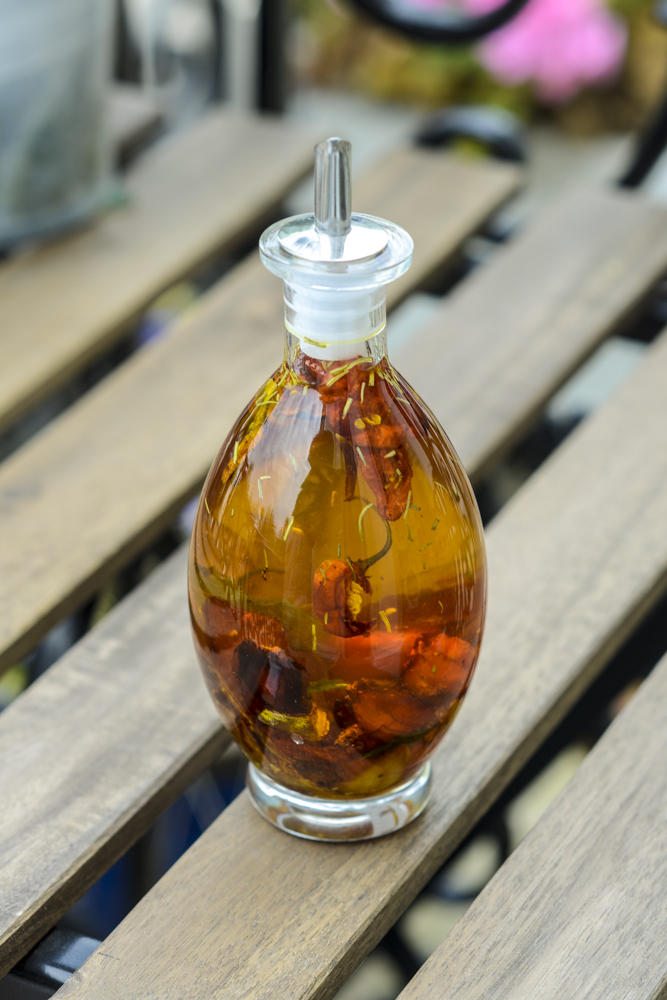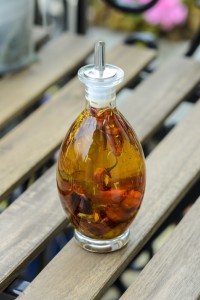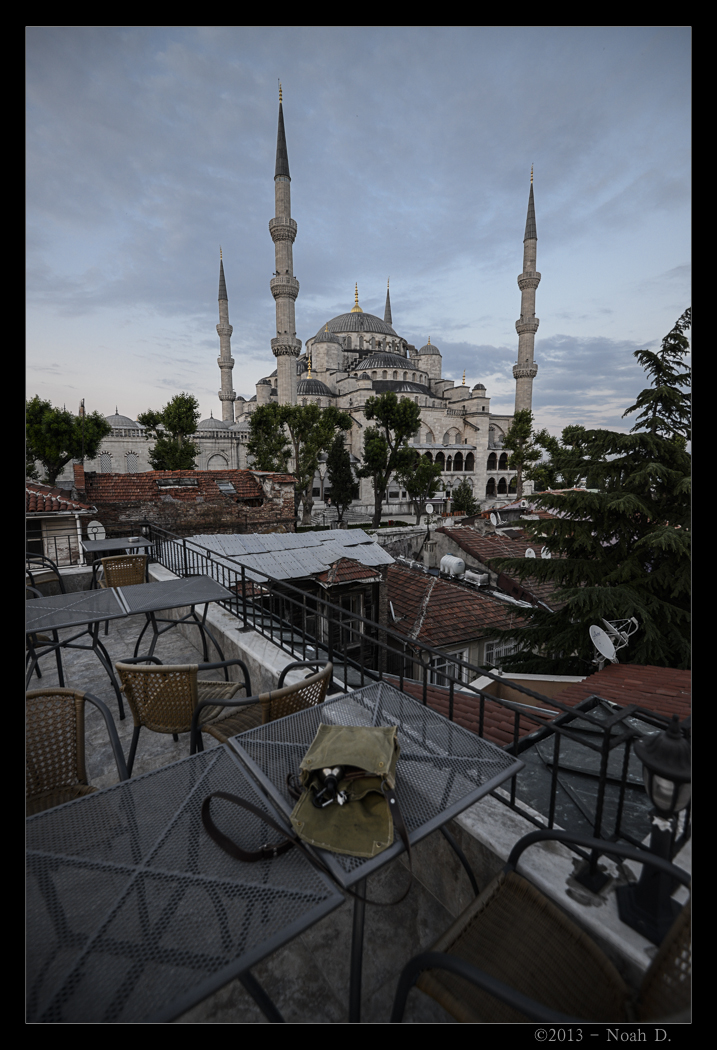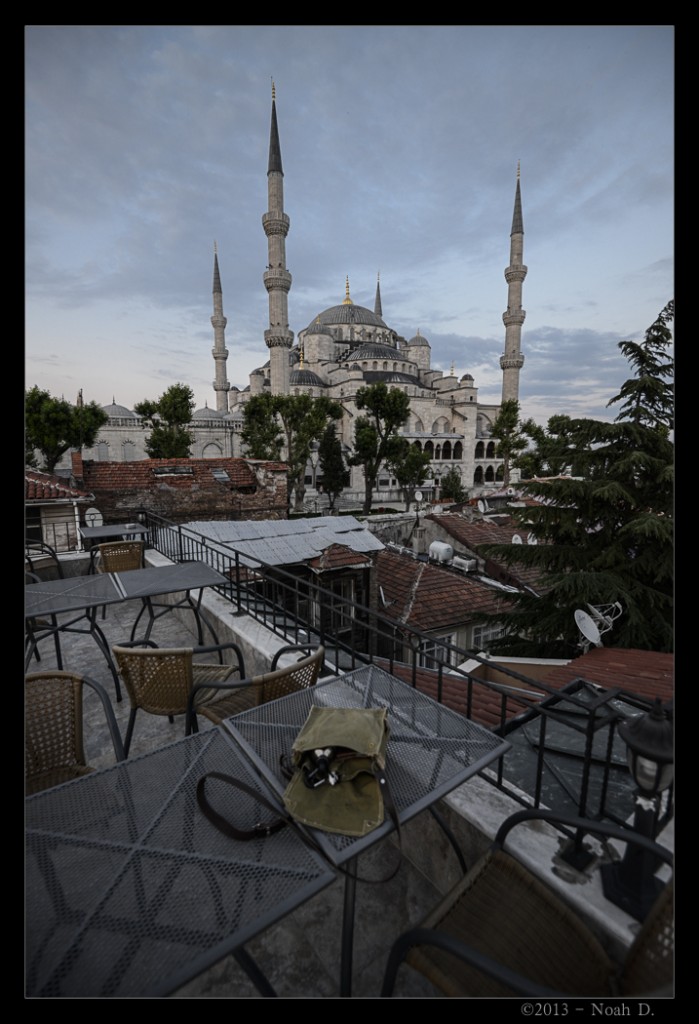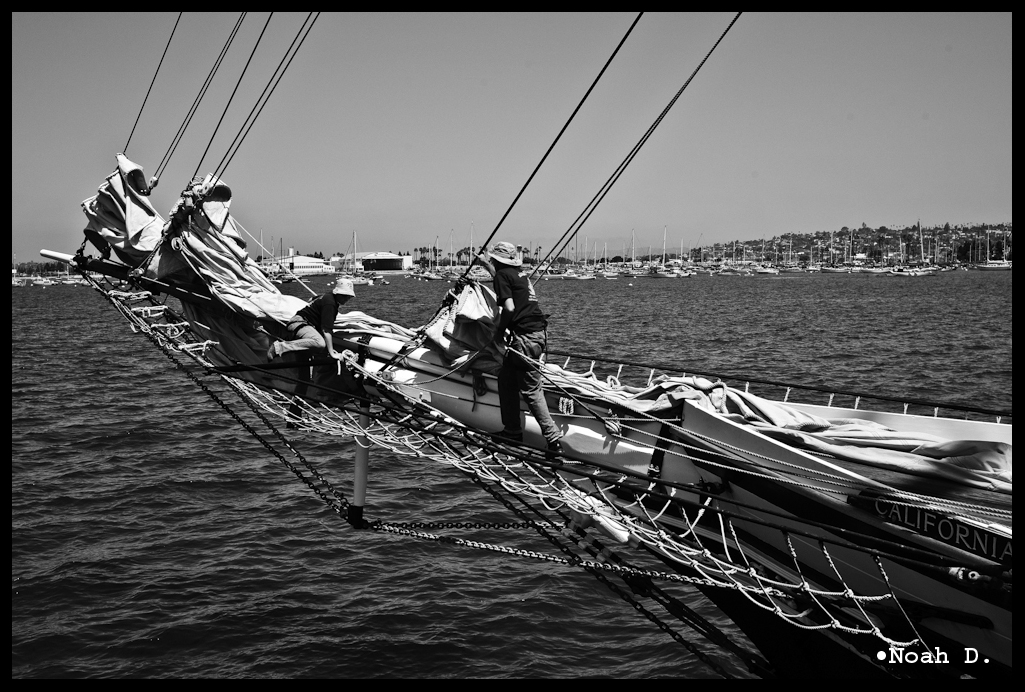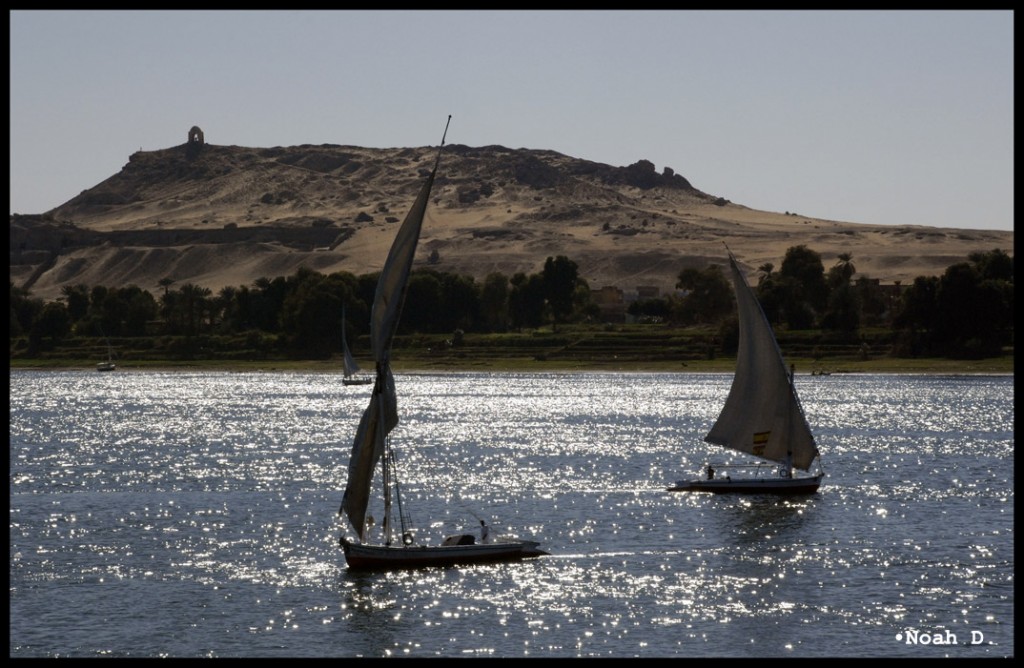By Noah
A house is a deeply personal thing. And a car, really, but for different reasons. So the purchasing of a boat that is intended to be a home mixes the two: lifestyle and personality.
I think one way to deal with it is to ask impossible questions: What will you miss about a house when you move away or have to sell it? Would it be the yard? The porch? The kitchen? I guess, perhaps, someone somewhere might miss a glorious bathroom with an enormous tub and heated towel rack and comfy toilet seats.
And when it comes to thinking about what you’ll miss, then think about the other stuff that you always complain about. Is the shower like bathing in an upright casket? Does the countertops (or lack thereof) drive you to distraction? Is it drafty, moldy, or in a bad part of town?
Now overlay the good with the bad.
Can you deal with wildly fluctuating hot water when it is in such a sexy neighborhood? Or is that porch as great as you think it is when you can only open one pizza box at a time on the countertop? All things in life require a certain degree of flexibility. That flexibility is reached by maintaining an ability to compromise. Still, dealing with idiosyncrasies and enduring hardship are two different things.
Larger live-aboard boats and sailboats compound these little idiosyncrasies and roll them up in a nice compact tube that can be taken almost anywhere in the world. Still, add those idiosyncrasies up too much and you might start seeing them as hardships (which is one step away from misery).
The only thing that makes the peculiarity of living aboard sailboats different from other land-based is that most of their parts and structures are similar. In a similar way that cars all have seats, steering wheels, and windows, a sailboat–though at first visually similar–are as different as a Ferrari is from an Aston Martin: to the discerning driver, they are not even in the same category of car. Flipping through SailBoatData.com floorplans, there doesn’t seem to be much variation: some 2-cabin, some 3-cabin, etc, and some the kitchen is there and the bathroom is there, or vice versa.
It is the nuance in design that makes such a difference. Some sailboats are like Aston Martin’s: sexy, fast, front-engine grand touring cars meant for sleek style and an all-around package. Some sailboats are like Ferrari’s: ridiculously powerful, high-performance, mid-engine super-cars that are designed to make a personal statement. And some sailboats are BMW’s: much cheaper than Ferrari’s and Aston Martin’s, but extremely reliable, ubiquitous, and safe (although relatively conservative).
Details are everything.
Here, in no particular order, are a few of those things that we take notice of browsing through the seemingly-endless numbers of boats on Yachtworld.com and proprietary broker sites.
An adequate master stateroom.
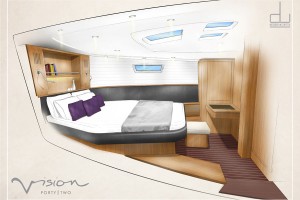 For the first month after Lynn followed me to London, we lived in an extremely small flat with only a single bed. We are in no hurry to return to that. Not only did it have practically no storage, there was nowhere to sit and had one window that looked out onto a solid wall. Woe to us, right?
For the first month after Lynn followed me to London, we lived in an extremely small flat with only a single bed. We are in no hurry to return to that. Not only did it have practically no storage, there was nowhere to sit and had one window that looked out onto a solid wall. Woe to us, right?
This is our opportunity to chose something that is seriously livable. Somewhere to put clothes and such is great (I mean, we live in a city) but also just somewhere for Lynn to sit to get ready in the morning would be an improvement over anything we’ve experienced since living in London.
We’ve found that some larger production boats designed for ocean passages tend to possess this sort of larger aft stateroom or larger-than-V-berth forward stateroom. Those hidey-hole berths in the back are great while actually sailing, but they are a bit of a pain to live day after day. We’d like to sit up and read at night, not slide into it like a catacomb.
Decent climate control.
Living well north of 51ºN is a fact of life in London. The North American equivalent is almost 200 miles north of the US/Canadian border. It gets dark at 4:30pm in the winter and doesn’t get truly dark until 10:15pm in the summer, but it really isn’t as bad as people think when it comes to precipitation… but warm, it is not. Many Northern European boats I’m seeing come with Webasto (or other brand) heating systems. More than just a convenience, I think it is only realistic to expect to need a certain amount of heat throughout the boat. There are some creature comforts that we may be doing without while living on a boat, but uncontrolled shivering at night isn’t reasonable.
A good galley.
It might be hard to believe, but any galley on almost any boat larger than 35ft will have a kitchen larger than our current one. The studio apartment we have now in London has a single space approximately one meter wide on which to prepare things, store things like our hot water kettle (ubiquitous in London). However, when it comes to keeping a microwave…? Not a chance. It sits on the floor plugged into a power strip when it is needed and then gets put back on a storage shelf when done.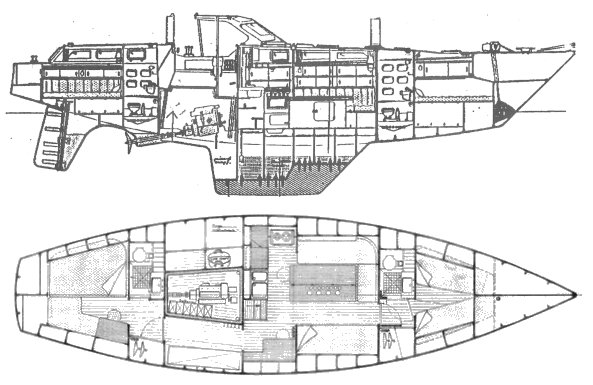
More important in a galley on a boat, though, is the usability of the galley. A big open galley with miles of countertops is great in a marina–it feels like a house, right!–but is the galley actually usable at sea? I’m becoming a fan of U-shaped or C-shaped galleys: everything seems so accessible. However, boats like the Beneteau Oceanis 411 has a layout in which the galley is pushed back down one side of the companionway and cockpit overhead so that there is a wall directly behind while the galley remains straight.
Sailboats must be a strange thing to design: they’re one of the only things I can think of (besides perhaps space-bound vehicles) that force the designer to think, “What happens when everything is pitched to the left or right 30º?”
A suitable head.
For those unaccustomed to bathrooms on boats, they may seem to come in more flavors than you can imagine. I mean, how different can a toilet be, right? But there are two main differences: powered and unpowered toilets. “The toilet is powered!?” you ask. Well, without getting too graphic, most land potties work by gravity. The water is held in a reservoir and “flushing” is merely letting the water fall into the toilet, emptying the waste and reloading the bowl for next time.
Well, sailboats don’t work quite like this. Most sit dry before and after use. It takes a pump to prime the toilet (read: let a little water in before use) and it takes a pump to flush the toilet and re-empty the bowl afterward. Sailboats possess a manual or electric pump to do all this. And some have a manual override (just in case there is no battery power for some reason).
Pumps invariably break, fail, lose suction, get old, burn out, etc. Which do we want to deal with whenever that time comes? Or do we want to be all earthy and get a composting head? I’ve heard amazing things (one being that it saves an enormous amount of space because you can practically get rid of the holding tank). Still… jury is out on that one.
Again, anything is likely going to be an improvement over our current flat. If Lynn and I need to use it at the same time…? Too bad. One must come out before the other goes in. To have two bathrooms (like most 40+ foot boats do) kinda makes us giddy.
Range-extending systems.
Speaking nothing of things like radar or GPS, we are interested in a few particulars when it comes to making our home a self-contained unit.
Lynn is a life-long diver and she intends to continue doing this on board whatever boat we have. An air compressor would be nearly a necessity. Now, it might not be reasonable to expect the boat to come pre-installed with such a compressor; however, it is important that the boat has the capability of handling it and the necessary other dive equipment.
Another important system is a water-maker. Even if we are going to be at a Thames dock for a while, it would become laborious to drag the hose out to fill up every time. Not to mention the fact that most marinas nickel-and-dime things like that. Flip on the water-maker, problem solved.
Self-contained power systems will become a practical necessity. I’ve liked watching the evolution of the wind turbines. Being in the northern latitudes, sun is around much less than wind. I mean, have you seen the windmill farms out in the English Channel and the mouth of the Thames!? It is insanely impressive. Power independence will not only be handy offshore, but simply living in a windy city and not having to pay much of a power bill? Sexy.
Interior decoration.
Okay, not quite my thing. Whenever I show Lynn a few boats, if the boat has god-awful upholstery or weird wood color, she nixes it quite quickly. Now, before you roll your eyes or think she’s being too “girly” I actually tend to agree with her. Boats don’t really have much variety when it comes to color variation. Exterior colors tend to be white, blue, or red. Interior colors tend to be lacquered wood and a “nautical” color like… blue, white, or red. Occasionally dark green sneaks in there. Or something with wide stripes (also nautical).
Maybe we’re taking this thing a little too far, but… yes, I know, we live on a boat. Our life will look like a Tommy Hilfiger or Ralph Lauren advertisement anyway. Now, why would we want to decorate the interior of a nautical thing… nautically? Stripes, knots, fish, boats, brass things…? We will, of course, make it “our own” after purchase, but things like settee upholstery is a little tougher and more expensive to deal with.
Stay tuned for the next episode. Many of these have been interior considerations: up next, exterior.
![A perfect sailboat… [Part 1]](http://www.haonavy.com/curiosity/wp-content/uploads/2014/06/2011_05.17-4977.jpg)
